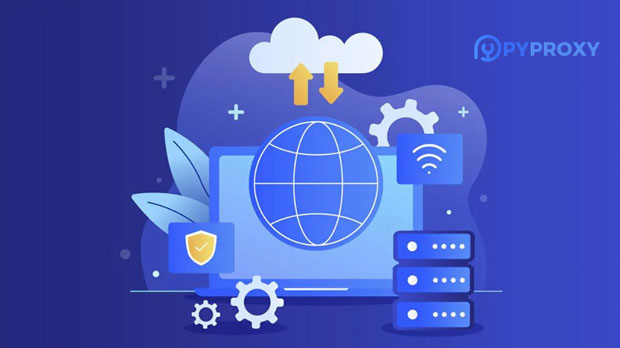In the current world of online security and data protection, enterprise networks often deploy proxy firewalls to regulate access, prevent data leakage, and enforce network policies. As a result, individuals and businesses seeking to bypass these firewalls have turned to various types of proxy solutions. Among them, Socks5 and HTTPS proxies stand out. But which one is better suited for penetrating enterprise proxy firewalls? This article will delve into the comparison, analyze the technical advantages and limitations of each, and provide insights into their real-world effectiveness. Understanding Proxy FirewallsBefore diving into the specifics of Socks5 and HTTPS proxies, it's crucial to understand what a proxy firewall is and how it operates. A proxy firewall acts as an intermediary between an internal network and external resources, filtering and controlling the data that passes between them. These firewalls often inspect the traffic at various levels, such as the network, application, and session layers. By doing so, they can block unauthorized traffic, monitor for suspicious activities, and ensure compliance with security protocols.The socks5 proxy: Advantages and Use CasesSocks5 is a protocol that allows for the transmission of data through a proxy server. Unlike HTTP and HTTPS, Socks5 operates at a lower level of the OSI model, allowing it to handle more than just HTTP traffic. This makes it a versatile solution for various types of network traffic, including TCP and UDP protocols.1. Transparency and AnonymityOne of the key features of Socks5 is its ability to anonymize traffic. Since it works at the transport layer, it doesn't modify the data or its headers, ensuring that the original data is passed through with minimal alteration. This makes Socks5 an attractive option for users looking to bypass network restrictions while maintaining a degree of anonymity.2. Flexibility in Protocol SupportSocks5 is capable of handling not just HTTP/S traffic but also other protocols such as FTP, SMTP, and even peer-to-peer (P2P) applications. This broad support makes it particularly useful for bypassing a wide range of enterprise firewall restrictions that may target specific types of traffic.3. Less Detection by Deep Packet Inspection (DPI)Since Socks5 does not alter the data packets significantly, it is less likely to be detected by deep packet inspection (DPI) mechanisms that some enterprise firewalls employ. This makes Socks5 more effective in scenarios where firewalls are configured to look for specific application-level signatures, such as HTTP or HTTPS traffic.The HTTPS Proxy: Advantages and Use CasesHTTPS proxies, on the other hand, are designed to specifically handle encrypted HTTPS traffic. These proxies function by acting as a secure tunnel between the user and the destination server, encrypting the data and making it difficult for firewalls to intercept or alter the transmitted information.1. Encryption and SecurityOne of the main advantages of using an HTTPS proxy is its built-in encryption. Since it operates over the HTTPS protocol, it ensures that data is transmitted securely, preventing unauthorized access or man-in-the-middle attacks. This can be a crucial feature for users concerned about data security and confidentiality, especially when accessing sensitive information over the internet.2. Compatibility with Modern Web ServicesThe majority of web traffic today is encrypted using HTTPS, and enterprise environments are often configured to allow HTTPS traffic through firewalls while blocking other types of unencrypted traffic. Therefore, HTTPS proxies are generally more compatible with modern web services, ensuring seamless access to websites and applications without interference from firewalls.3. SSL/TLS Inspection and DetectionWhile HTTPS proxies provide encrypted tunnels for secure communication, many enterprise firewalls employ SSL/TLS inspection to intercept and analyze encrypted traffic. This can lead to potential issues, as the firewall can decrypt and inspect the HTTPS traffic before allowing it through. As a result, HTTPS proxies are more likely to be detected by enterprise firewalls that use SSL/TLS inspection, especially if the firewall is actively scanning for proxy usage.Socks5 vs. HTTPS Proxy: Comparison for Penetrating Enterprise Firewalls1. Detection and EvasionWhen it comes to bypassing enterprise proxy firewalls, Socks5 tends to be more effective in evading detection. Since it does not modify the data packets as much as HTTPS proxies do, it is less likely to be flagged by DPI-based inspection systems. On the other hand, HTTPS proxies often face challenges due to SSL/TLS inspection, which can decrypt and analyze encrypted traffic for potential security threats.2. Flexibility and Protocol SupportSocks5 shines in scenarios where there is a need to bypass various types of protocols beyond just HTTP/S traffic. It can handle multiple protocols, including FTP and P2P, making it more versatile than HTTPS proxies in certain use cases. HTTPS proxies, however, are limited to handling HTTPS traffic, which could be restrictive when trying to access other types of network services.3. Security and PrivacyBoth Socks5 and HTTPS proxies offer varying degrees of security and privacy. HTTPS proxies provide encrypted communication, which is essential for ensuring confidentiality. However, Socks5 does not inherently offer encryption, which might make it less secure compared to HTTPS proxies in some cases. Users seeking a secure and private connection might prefer HTTPS proxies for their encryption capabilities. But for users focused on bypassing restrictions rather than securing data, Socks5 may offer more flexibility.4. Speed and Efficiency sock s5 proxies generally offer better performance and lower latency compared to HTTPS proxies. Since Socks5 operates at a lower level of the network stack, it is more efficient in handling traffic without the overhead of encryption. On the other hand, HTTPS proxies must encrypt and decrypt data, which adds an additional layer of complexity and can affect speed.Real-World Scenarios and RecommendationsIn real-world scenarios, the choice between Socks5 and HTTPS proxies depends largely on the specific requirements of the user and the configuration of the enterprise proxy firewall. For users primarily looking to bypass restrictions and access a range of network services, Socks5 may be the more effective choice. Its versatility, transparency, and resistance to detection make it an ideal candidate for evading firewalls in diverse network environments.On the other hand, users who prioritize security and privacy might opt for HTTPS proxies, particularly if they need encrypted communication for accessing sensitive data. However, they should be aware of the potential for SSL/TLS inspection and the possibility of detection by firewalls.ConclusionIn summary, while both Socks5 and HTTPS proxies have their strengths and weaknesses, the decision to use one over the other largely depends on the specific needs and objectives of the user. If the primary goal is to bypass enterprise proxy firewalls with minimal detection, Socks5 offers a clear advantage due to its flexibility and stealth capabilities. However, if security and encrypted communication are paramount, HTTPS proxies provide a more robust solution, albeit with the potential downside of detection in environments with SSL/TLS inspection. Ultimately, users should carefully assess their needs to determine which proxy type is most suitable for their use case.
Jul 31, 2025



































































